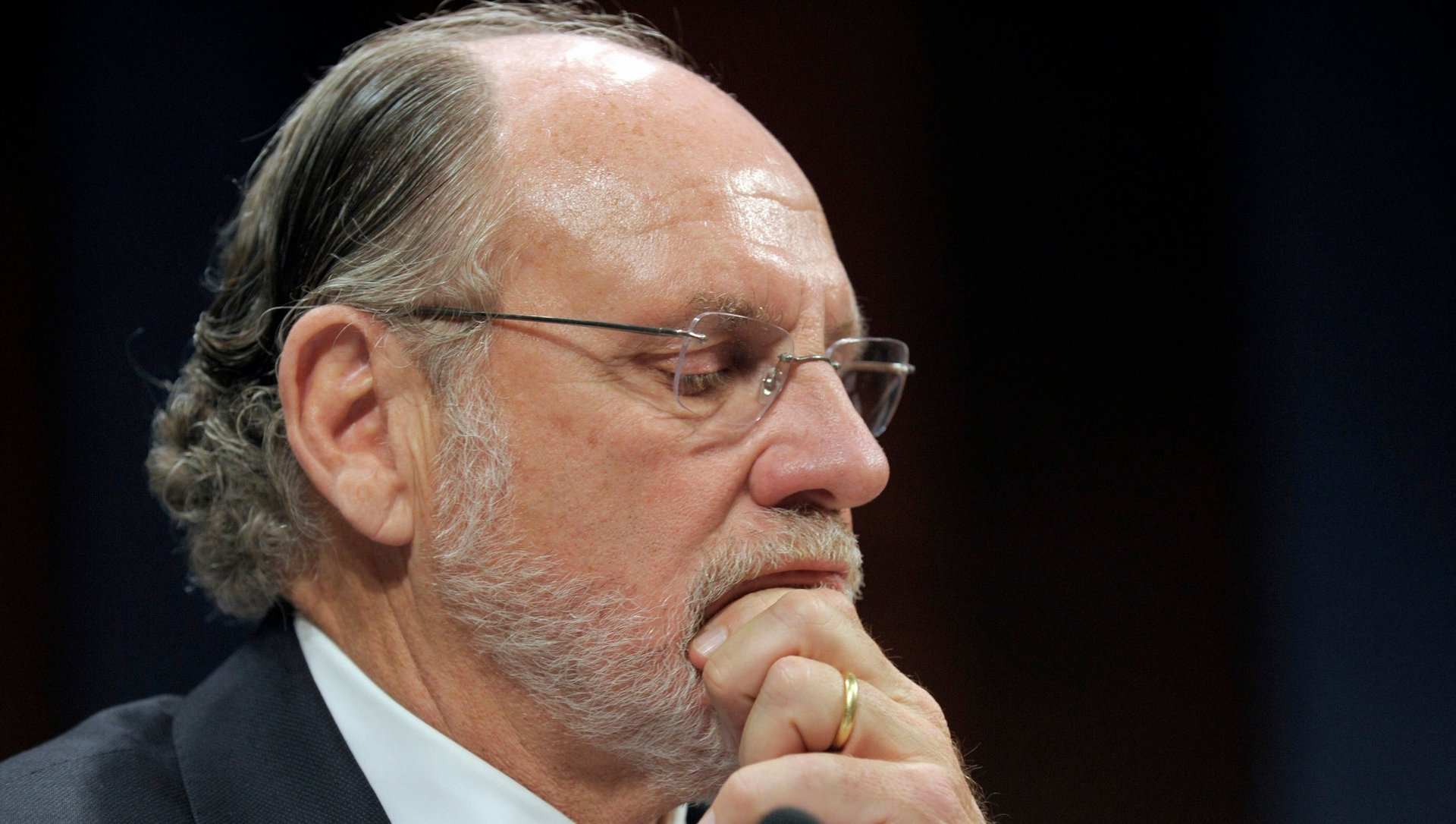MF Global’s collapse was Jon Corzine’s fault, confirms the Freeh report
The collapse of brokerage firm MF Global in October 2011 was another reminder of how fragile the financial system can be. But the firm was under a microscope also because it was led by Jon Corzine, a former New Jersey governor who had also been co-chairman of Goldman Sachs. And a report filed today by MF Global bankruptcy trustee Louis Freeh emphasizes what many had already concluded: MF Global’s failure was largely due to Corzine’s mismanagement and risky behavior.


The collapse of brokerage firm MF Global in October 2011 was another reminder of how fragile the financial system can be. But the firm was under a microscope also because it was led by Jon Corzine, a former New Jersey governor who had also been co-chairman of Goldman Sachs. And a report filed today by MF Global bankruptcy trustee Louis Freeh emphasizes what many had already concluded: MF Global’s failure was largely due to Corzine’s mismanagement and risky behavior.
MF Global was already in financial trouble when Corzine took over. To bring in more money, Corzine concluded, it had to expand its business and eventually turn into a full-fledged investment bank—a mini Goldman Sachs. As part of that effort, Corzine introduced proprietary trading as a major part of MF Global’s business. The Freeh report cites how Corzine hand-picked traders, one of whom he tasked to open new accounts in his name:
In June 2010, Corzine started trading on his own using an existing Treasury Department account. He maintained his own portfolio for the Company in accounts that bore his initials, JSC.
At Goldman, Corzine was known for rallying the troops on the trading floor. This was great for morale but also meant not enough attention was paid to details, according to those who knew him at the bank. At MF Global Corzine’s own trading activities raised eyebrows and were only minimally supervised, the Freeh report says:
Corzine spent a significant amount of time trading and overseeing PSG [Principal Strategies Group], even placing trades in the middle of meetings. The amount of time Corzine spent trading was a frequent topic of discussion among MF Global employees. [MF Global President Bradley] Abelow and others questioned whether the Chairman and CEO should be so focused on trading, as opposed to the many other demands of his position.
To improve its income, MF Global began relying on investments in European sovereign debt at a time when all such debt was investment grade. But as the European debt crisis began to take hold, MF Global began to suffer. Corzine nonetheless kept exceeding the limits for European sovereign investments, even as MF Global kept increasing its risk appetite. Corzine seems to become almost obsessive about European sovereign debt, believing he could manipulate, restructure and move around investments to keep the portfolio going.
The board began pushing back, and in August 2011, it decided to halt the European trading. But the damage was already done.
Corzine understood that the Board was becoming increasingly uncomfortable with the portfolio. He expressed to one Board member that, if the Board did not agree with him, then perhaps it needed someone else to run the Company.
But MF Global was still in denial, at least to Standard & Poor’s, after it was downgraded by Moody’s. In an email to S&P cited in the Freeh report, MF Global CFO Henri Steenkamp said MF Global’s “capital and liquidity has never been stronger,” and that “MF Global is in its strongest position ever as [a] public entity.”
As the world began crashing down around MF Global, Corzine realized the size of his company’s problem. Yet he was still doing work that didn’t have much to do with trying to save MF Global, and missed a chance to sell the European debt investments, according to the Freeh report.
Abelow brought a representative of the investment bank Jefferies & Company (“Jefferies”) to meet with Corzine to discuss selling the portfolio. Corzine refused to meet with the representative because he was in the process of auctioning some commercial paper, and needed to complete the sales before the close of the London market.
MF Global’s collapse caused thousands of customers to lose money, spurred Congressional hearings and led to the eighth-largest bankruptcy in US history. But the story isn’t over yet. There have been various lawsuits filed already against MF Global and Freeh’s report suggests Corzine could be next in line.
The decision to expand MF Global’s proprietary trading may have appeared sound in a vacuum, but in the reality of the business Corzine and his management team inherited with its known controls and resource deficiencies, this strategy was disastrous.